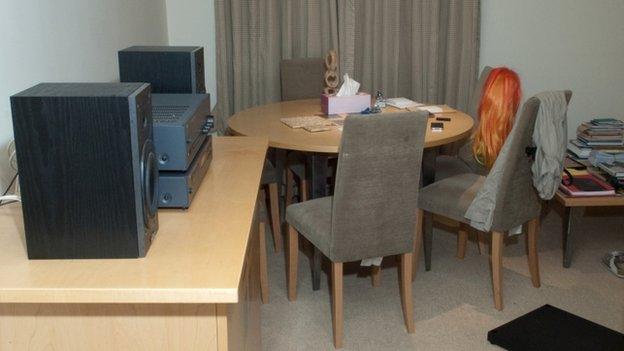Explanation 'unlikely' for MI6 officer's death
- Published
Gareth Williams: What the evidence tells us

INJURIES: Nine days passed between the death of Gareth Williams and his post-mortem examination. His body had become badly decomposed, making the work of pathologists and toxicologists difficult. Dr Benjamin Swift only found small injuries on Mr Williams, which could have been the result of accidents. He noted that poison or asphyxiation were the most likely causes of death. Toxicologists said some substances, such as cyanide, chloroform and anaesthetic agents, would not have been detectable.

THE LOCKED BAG RIDDLE: One key question before the inquest was whether Mr Williams had locked himself in the bag. Expert witness Peter Faulding, shown above, said that he had tried and failed to lock the bag from inside 300 times. "I couldn't say it's impossible, but I think even Houdini would have struggled with this one," he said. William MacKay, another expert witness, said that he and an assistant had failed in more than 100 attempts to lock the bag from inside - but couldn’t rule out that Mr Williams had been able to.

INSIDE THE BAG: Did Mr Williams die inside the bag? Pathologist Dr Richard Shepherd said: "The balance of probability is that Gareth was alive when he got in the bag.” He added: "I think there could have been a period of awareness that he needed to get out. The length of time might have been short." But Mr Faulding said he believed that Mr Williams was dead or unconscious before being placed in the bag. He suggested it would have been possible to shut Mr Williams in the holdall as long as rigor mortis had not set in.

WEBSITES AND SMARTPHONES: As part of the inquest, Mr Williams's computers and phones were examined. Detectives said the computers had been used to visit bondage websites. But, the inquest heard, this did not necessarily suggest an ongoing interest in such sites. Mr Williams's phones also had bondage websites in their browser history, while a smartphone found on a table contained no data because its factory settings had been restored.

WOMEN'S CLOTHES: Shoes and women’s designer clothing valued at £20,000 were found in the flat. Detectives also said that about half of the internet use on Mr Williams's computers had been in the area of women's high fashion, including handbags, cosmetics, belts and gloves. Friends and family members said they did not believe the clothes were for Mr Williams, but were probably intended as gifts. Friend Elizabeth Guthrie told the inquest Mr Williams had no interest in cross-dressing and she believed he was "straight".